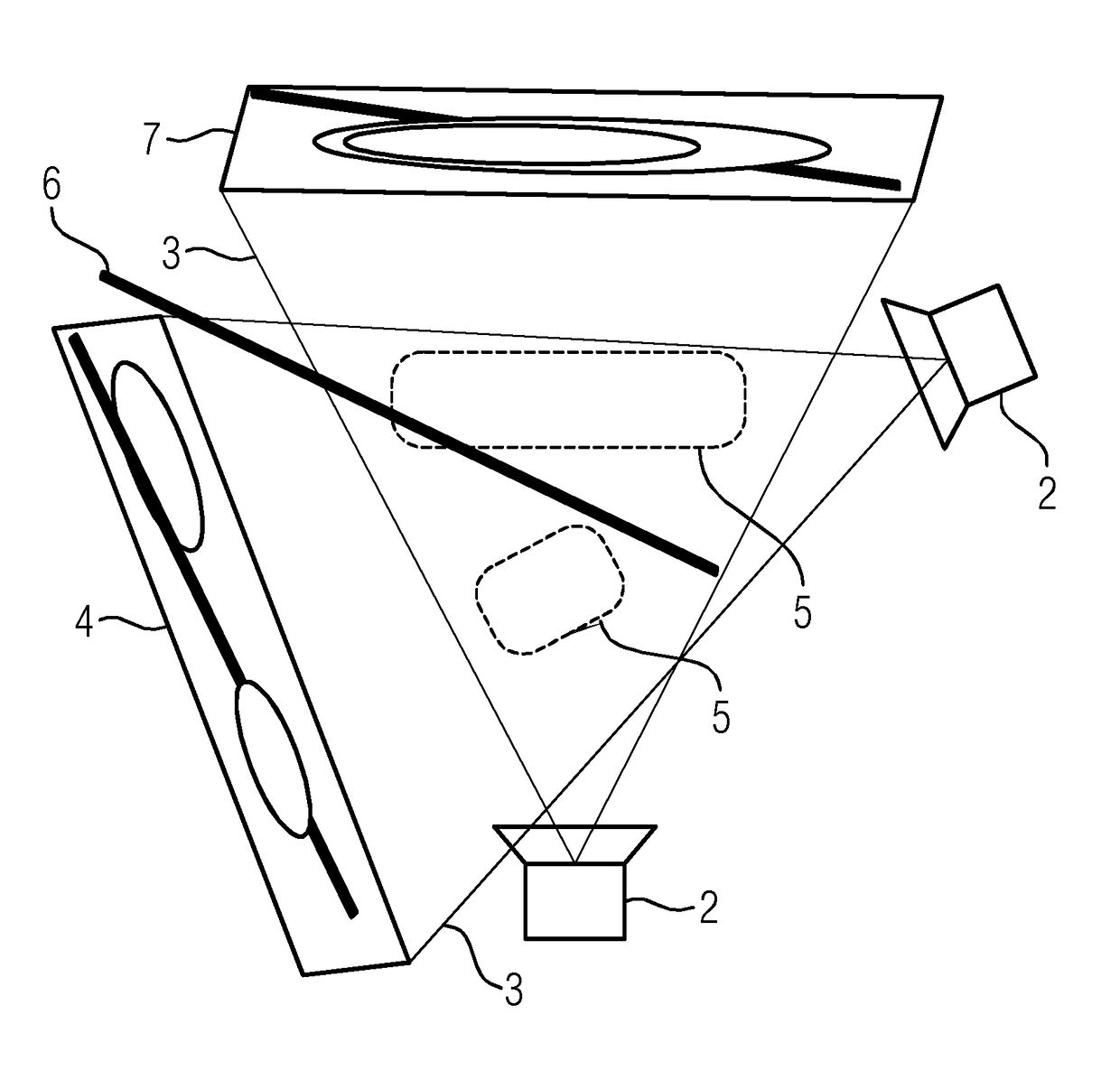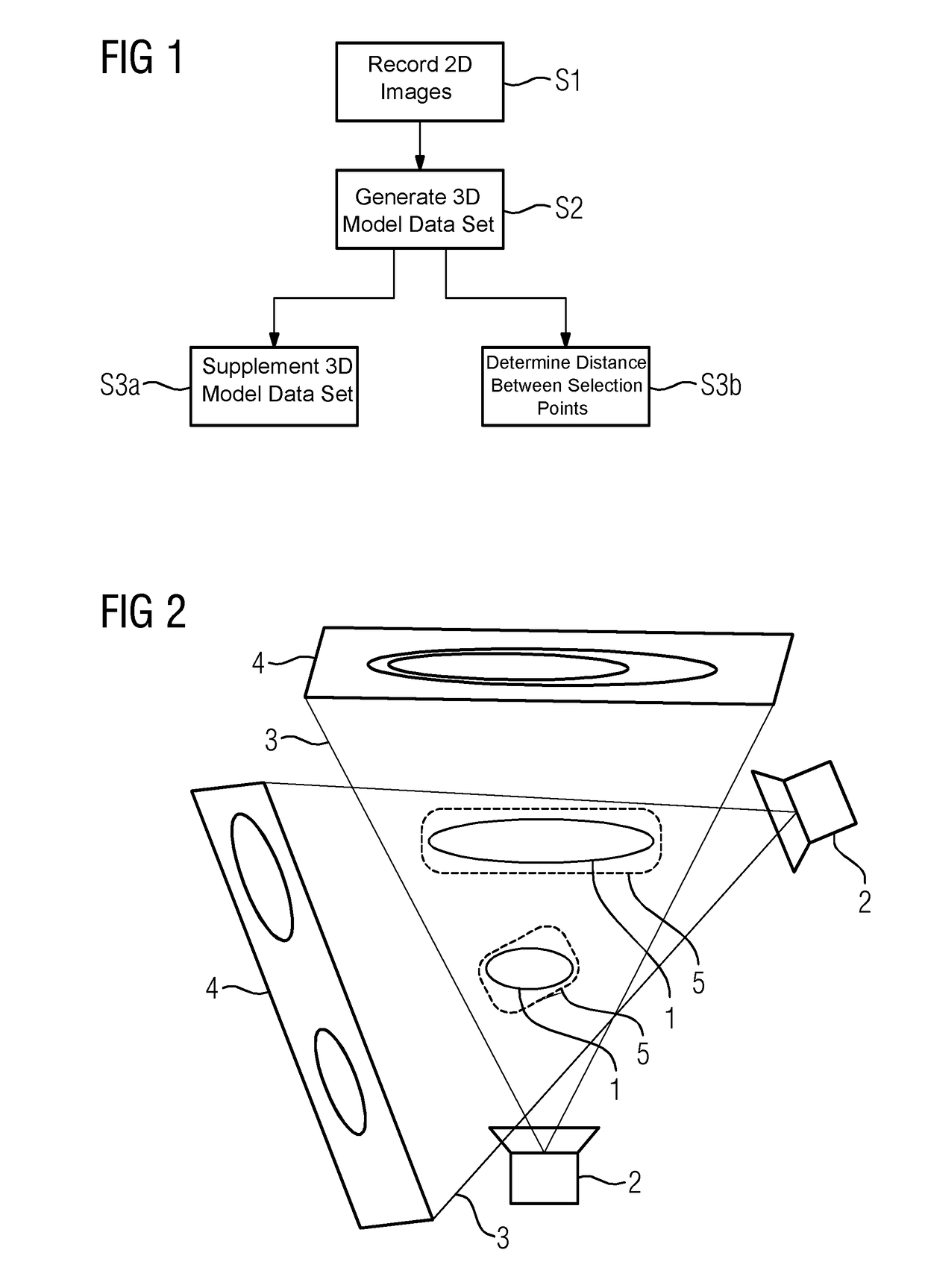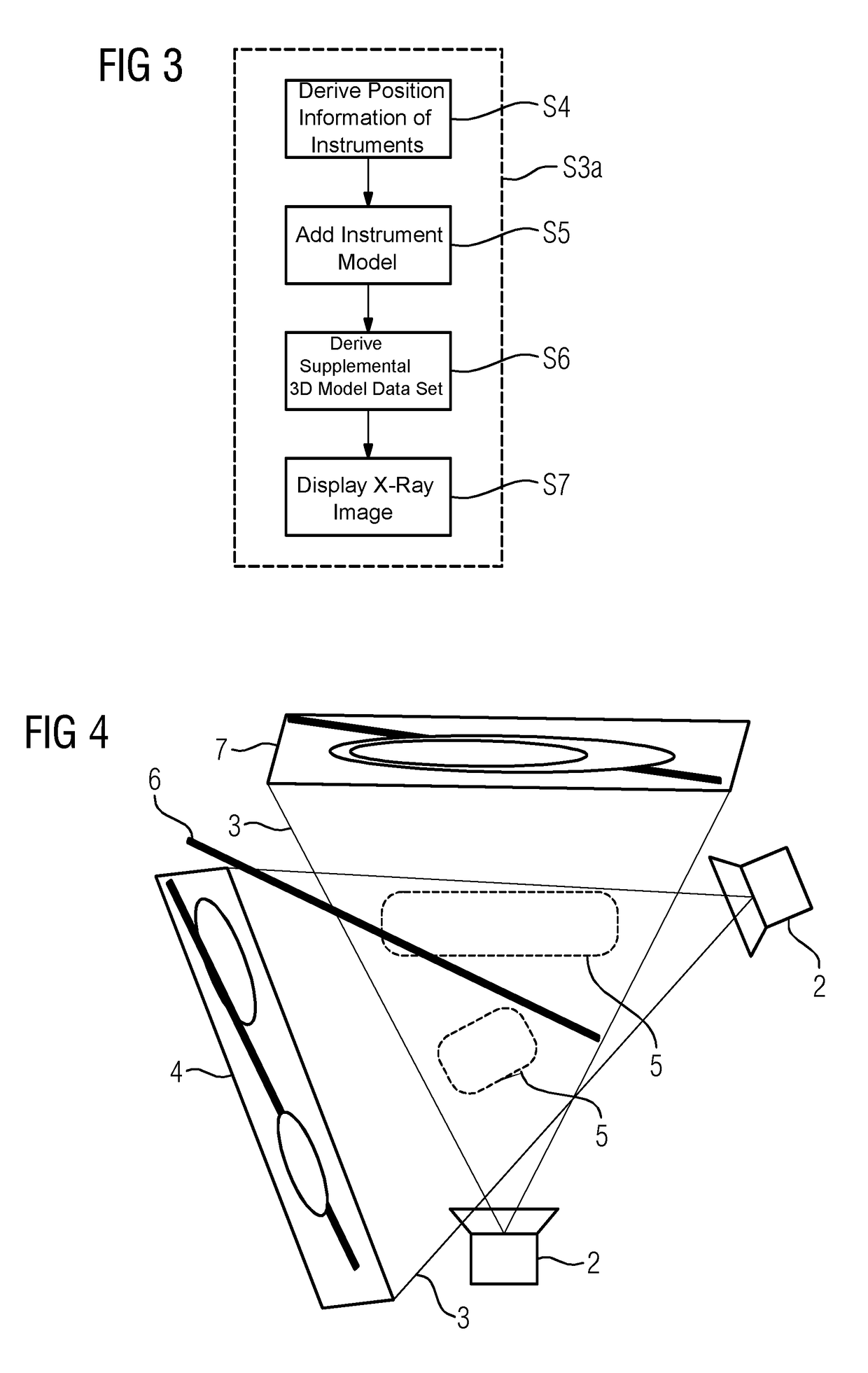Method of image support for a person carrying out a minimally invasive procedure with an instrument in a procedure site of a patient, x-ray apparatus, computer program and electronically readable data carrier
a technology for a patient and an instrument, which is applied in the field of image support for a person carrying out a minimally invasive procedure with an instrument in the procedure site of a patient, can solve the problems that the three-dimensional model data set only adequately describes the anatomy for a large number of applications, and achieves the effects of reducing the time of the minimally invasive procedure, high accuracy, and time-efficient and reliable monitoring
- Summary
- Abstract
- Description
- Claims
- Application Information
AI Technical Summary
Benefits of technology
Problems solved by technology
Method used
Image
Examples
Embodiment Construction
[0039]Referring now to the figures of the drawings in detail and first, particularly to FIG. 1 thereof, there is shown a basic flowchart of an exemplary embodiment of an inventive method. A person carrying out a minimally invasive procedure is to be supported by images. To enable this, it is firstly provided in a step S1 that by means of an X-ray apparatus, two-dimensional X-ray images are recorded using an X-ray apparatus in recording geometries chosen by the person and which correspond to different projection directions specific to the procedure. In the present case this is an X-ray apparatus having a C-arm, which can also be flexibly positioned at the procedure site in order to record the X-ray images. If an example from traumatology is used, the person can, for example, select the recording geometries specific to the procedure such that the correct position of an implant as the medical instrument can be optimally assessed. In the present case, by way of example two X-ray images,...
PUM
 Login to View More
Login to View More Abstract
Description
Claims
Application Information
 Login to View More
Login to View More - R&D
- Intellectual Property
- Life Sciences
- Materials
- Tech Scout
- Unparalleled Data Quality
- Higher Quality Content
- 60% Fewer Hallucinations
Browse by: Latest US Patents, China's latest patents, Technical Efficacy Thesaurus, Application Domain, Technology Topic, Popular Technical Reports.
© 2025 PatSnap. All rights reserved.Legal|Privacy policy|Modern Slavery Act Transparency Statement|Sitemap|About US| Contact US: help@patsnap.com



